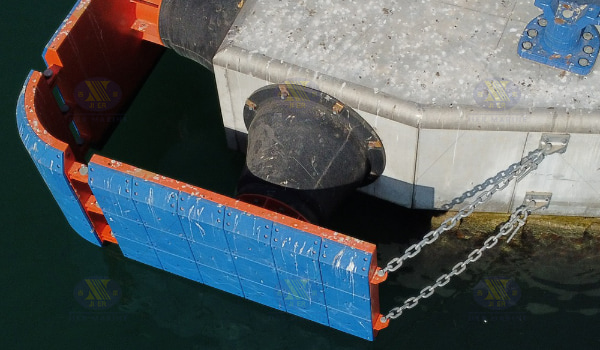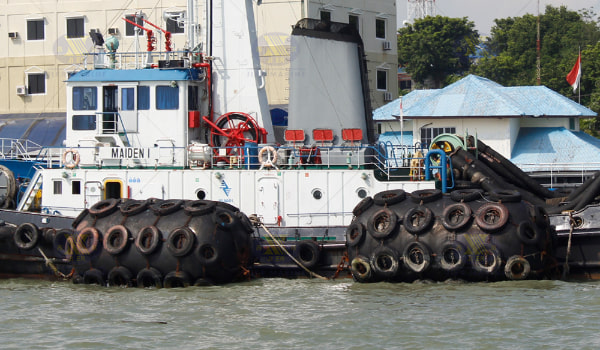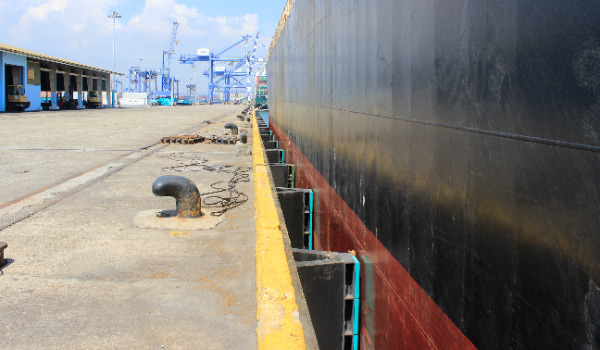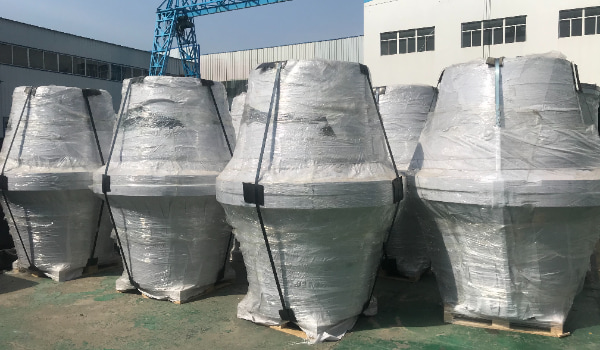Introduction
Marine rubber fenders play a crucial role in protecting vessels and quay structures during berthing operations. They absorb impact energy and minimize damage caused by collisions. However, improper use, harsh environments, and poor maintenance can significantly reduce their service life. To ensure long-term performance and safety, operators must take proactive measures in installation, inspection, and upkeep.
![cone fender]()
1. Understand the Working Conditions
Each type of fender—cylindrical, cone, cell, arch, or pneumatic—is designed for specific berthing environments and vessel sizes. Before installation, engineers should assess parameters such as tidal variation, berthing angle, approach velocity, and expected impact energy. Selecting a fender that matches these conditions ensures optimal energy absorption and prevents overstressing the rubber body.
Tip: Avoid overloading the fender beyond its rated energy absorption capacity, as this can lead to permanent deformation or cracking.
![arch-fender]()
2. Ensure Proper Installation
Many fender failures originate from poor installation practices. Uneven mounting surfaces, incorrect bolt torque, or misaligned panels can create stress concentrations. To prevent this:
(1) Align the fender system precisely with the quay wall.
(2) Use stainless or galvanized bolts with proper tightening torque.
(3) Apply protective washers and anti-corrosion coatings.
(4) For large units, confirm that the backing structure can withstand the maximum reaction force.
![Pneumatic-Rubber-Fenders]()
3. Prevent Chemical and UV Degradation
Rubber is sensitive to environmental factors like UV radiation, saltwater, and oil exposure. Over time, these elements can cause hardening, surface cracking, or loss of elasticity.
To minimize environmental damage:
(1) Apply UV-resistant coatings on exposed surfaces.
(2) Rinse the fender with fresh water after prolonged seawater exposure.
(3) Avoid contact with petroleum products and chemical spills.
For floating and pneumatic fenders, regular cleaning and pressure checks are vital to maintain airtight integrity.
4. Minimize Mechanical Damage
Improper berthing operations are one of the most common causes of fender wear and tear. To prevent mechanical damage:
(1) Train ship pilots and tug operators to control berthing speed and angle.
(2) Ensure that the fender panel, if used, is equipped with low-friction UHMW-PE pads to distribute loads evenly.
(3) Avoid dragging anchors, chains, or sharp-edged materials across the fender surface.
(4) For foam-filled and pneumatic types, monitor internal pressure and buoyancy regularly.
![ship-berthing-the-TTV-fender]()
5. Conduct Regular Inspections and Maintenance
Routine inspection can detect minor issues before they develop into major failures. A well-organized maintenance plan should include:
(1) Visual inspection for cracks, delamination, and deformation.
(2) Checking the tightness of bolts and the condition of metal frames.
(3) Measuring the compression performance if fenders show signs of stiffness loss.
(4) Replacing worn or corroded components immediately.
A digital inspection log helps track service intervals and predict replacement cycles based on actual usage data.
6. Store and Handle Correctly
For fenders that are not in continuous use, proper storage is essential. Keep them in a dry, shaded area away from direct sunlight or ozone sources. Avoid stacking heavy items on top of rubber components to prevent shape distortion. When handling large fenders with cranes or forklifts, use lifting belts rather than metal hooks to avoid cutting or tearing.
![cone-fender-package]()
Conclusion
Extending the lifespan of marine rubber fenders requires a combination of correct selection, precise installation, environmental protection, and regular maintenance. By implementing these best practices, port operators can reduce replacement costs, enhance operational safety, and ensure consistent energy absorption performance over time.
JIER Marine offers a complete range of high-performance rubber fenders—engineered, tested, and customized to meet global port standards. Each fender is designed for durability, energy efficiency, and long service life, ensuring maximum protection for your vessels and berthing structures.

 English
English



